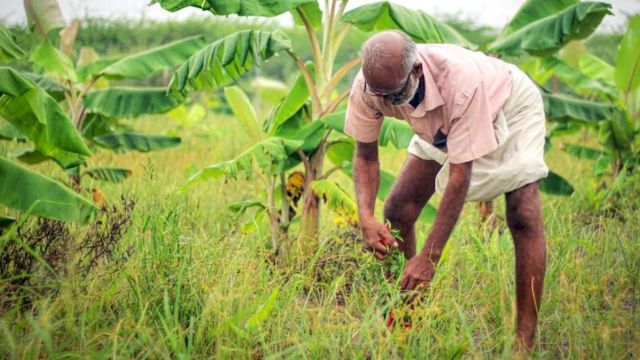For millennia, art has been a potent vehicle for delivering ideas, arouse feelings, and start movements. Growing numbers of artists have turned to eco-art in recent years in order to tackle urgent environmental concerns.
Eco-art, sometimes referred to as environmental art, is a type of artistic expression aimed at increasing awareness of environmental preservation by means of sustainable materials, emphasizing ecological themes, or involving local populations in environmental conversation. This creative movement is becoming a powerful instrument for raising public awareness of problems including species extinction, pollution, deforestation, and climate change.
1. Understanding Eco-Art and Its Purpose
Eco-art is more than just visually appealing; it is a purpose-driven form of art that focuses on fostering a deeper connection between people and the natural world. Unlike conventional art, which may primarily aim to entertain or decorate, eco-art seeks to educate, provoke thought, and inspire action on environmental issues. Artists who create eco-art often use natural, recycled, or reclaimed materials to reduce their environmental footprint and demonstrate sustainable practices.
For instance, Andy Goldsworthy, a renowned British sculptor, uses natural elements like leaves, stones, and ice to create temporary installations that interact with nature. His work is a reminder of the transient nature of both art and the environment, emphasizing the delicate balance of ecosystems.
2. Eco-Art as a Tool for Environmental Activism

Eco-art has proven to be an effective tool for environmental activism. It provides a compelling way to communicate complex environmental issues that might otherwise be ignored or misunderstood. By using visuals, installations, and interactive experiences, eco-art can engage audiences emotionally, making the message more impactful and memorable.
For example, Chris Jordan, an American artist and photographer, uses shocking visual representations to illustrate the devastating impact of plastic waste on marine life. His series “Midway: Message from the Gyre” depicts albatross carcasses filled with plastic debris, a visceral representation of the consequences of human consumption and waste.
Another powerful example is Olafur Eliasson’s “Ice Watch,” where the artist transported melting icebergs from Greenland to major cities like London and Paris. The installation allowed people to experience the tangible effects of climate change firsthand, making the global issue of melting ice caps more relatable and urgent.
3. Promoting Community Engagement and Environmental Education
Eco-art is not only about creating visually impactful pieces but also about engaging communities in the conversation. Many eco-artists organize workshops, public installations, and interactive exhibits that invite participants to reflect on their environmental impact and take action.
For instance, Buster Simpson, an environmental artist, has created site-specific installations that engage local communities in discussions about water pollution and urban sustainability. His work “Dioxin Ferry” involved a public art project that highlighted the pollution of Seattle’s Duwamish River, raising awareness about toxic waste and advocating for clean-up efforts.
Similarly, Agnes Denes, a pioneering eco-artist, created “Wheatfield – A Confrontation” in 1982, where she planted a two-acre wheatfield in Manhattan, New York City. This project juxtaposed nature against the backdrop of the city’s financial district, challenging viewers to reflect on the contrast between economic growth and environmental degradation. The wheatfield became a symbol of the tension between human progress and ecological balance, sparking conversations about sustainable urban development.
4. Eco-Art and Public Policy Advocacy
In addition to raising awareness, eco-art has the potential to influence public policy by drawing media attention and mobilizing public support for environmental initiatives. Art installations that address climate change, endangered species, or deforestation can serve as catalysts for policy discussions and advocacy campaigns.
For example, the Cape Farewell project is a collaborative initiative involving artists, scientists, and educators to raise awareness about climate change. The project organizes expeditions to the Arctic, where artists create works inspired by the changing landscape. These artworks are then exhibited globally to promote climate action and inform policy dialogues.
Additionally, Maya Lin’s “What Is Missing?” is a multimedia art project that documents species extinction and habitat loss. Lin uses interactive media to highlight the effects of human activities on biodiversity, encouraging audiences to support conservation efforts. The project’s website also provides actionable steps individuals can take to mitigate environmental harm, bridging the gap between awareness and action.
5. Challenges and Critiques of Eco-Art
Despite its positive impact, eco-art is not without its challenges and criticisms. One major criticism is the paradox of creating art that raises environmental awareness while still consuming resources. Some critics argue that large-scale installations or art pieces that use excessive materials may contradict the very message they aim to convey.
To address this issue, many eco-artists prioritize the use of recycled, biodegradable, or ephemeral materials that minimize environmental impact. Additionally, some artists choose to work with local communities to create art from locally sourced materials, further reducing their ecological footprint.
Another challenge is the accessibility of eco-art, as some installations are located in galleries or urban centers, limiting access for marginalized communities who are often the most affected by environmental issues. To counter this, artists like Swoon and Rael San Fratello use public spaces and community-focused projects to make eco-art more inclusive and accessible.
6. The Future of Eco-Art in Environmental Conservation
As environmental crises continue to escalate, the role of eco-art in conservation efforts is becoming increasingly significant. By merging art with activism, eco-art can inspire behavioral change, foster community engagement, and amplify marginalized voices in environmental discourse.
The future of eco-art will likely see a rise in digital and interactive art forms, allowing artists to reach broader audiences while reducing their environmental impact. Additionally, the integration of emerging technologies like augmented reality (AR) and virtual reality (VR) could further enhance the educational and emotional impact of eco-art, making complex environmental issues more tangible and urgent.
Conclusion
Eco-art serves as a potent tool for raising awareness about environmental conservation, bridging the gap between art and activism. By employing sustainable materials, connecting communities, and addressing important ecological challenges, eco-artists create captivating visual tales that question cultural conventions and encourage positive change.
From ephemeral installations to large-scale public projects, eco-art continues to evolve as a critical instrument in the global battle to conserve our planet and promote sustainable living.
Explore impactful stories, critical analyses, and insightful discussions on global environmental issues. Stay informed about political ecology, cultural movements, and sustainable practices. Join our community today to dive deeper into the intersection of ecology, politics, and social justice. Start exploring now!














